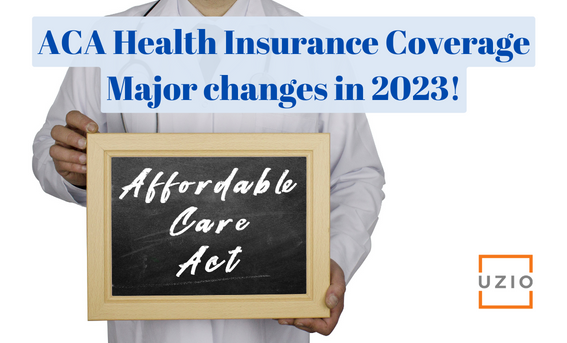
Looking for ACA Health Insurance Coverage? Learn here what is new in 2023!
Quick links
-
Introduction
-
Premiums are going up but consumers will not see it because of enhanced subsidies
-
The “Family Glitch” has been fixed
-
Marketplace eligibility rules have been relaxed
-
New entrants entering the marketplace, some leaving
-
Low-income individuals can enroll year around
-
Conclusion
Introduction
It is that time of the year. The leaves are falling, days are getting shorter, temperatures are beginning to dip and the Affordable Care Act (ACA), also known as Obamacare, launched the open enrollment for coverage starting January 1, 2023. The open enrollment will last from November 1, 2022 to January 15, 2023 in most states. It is worth noting that generally individual/family health coverage is no longer available for purchase year-around. Individuals can sign up for health insurance during open enrollment or what is called SEP (special enrollment periods), somewhat similar to employer-sponsored coverage.
This is the tenth year since the launch of ACA. There are some very exciting changes this year. Some of these changes will make it more affordable for low income families to get health insurance coverage through ACA.
In this article, we will cover the major changes that you should be aware of!
Premiums are going up but consumers will not see it because of enhanced subsidies
In 2023, according to the CMS (Centers for Medicare and Medicaid Services), on average, premiums for the benchmark plan available on ACA marketplace will increase 4% from 2022. However, because of the increased subsidy available following the implementation of the American Rescue Plan Act of 2021 (ARP) and the Inflation Reduction Act of 2022 (IRA), the end consumers will not see an increase in their cost.
People who earn up to 150% of FPL (Federal Poverty Line) – so make up to $20,385 for an individual and $27,465 for a couple – can now get silver plans on the ACA marketplace for zero premium.
Consumers who earn up to 400% of FPL – so make up to $54,360 for an individual and $73,240 for a couple receive subsidy on a sliding scale.
Consumers who earn more than 400% of FPL, they will not be required to pay more than 8.5% of their household income toward premiums. This change may only provide limited relief to young individuals as the unsubsidized plans for young adults in most areas already cost less than the 8.5% of someone making 400% of FPL. However this will offer substantial relief to older individuals.
The “Family Glitch” has been fixed
Until this year, millions of people have been ineligible for ACA subsidies because of something called the “Family Glitch”. Generally, people are ineligible for ACA subsidies if they have an offer of “affordable job-based coverage”. However, until 2023, the affordability determination has always been based on the cost of employee-only coverage, without taking into account the cost to add family members to the plan. If the employer-sponsored plan was deemed affordable for the employee coverage, the entire family was ineligible for subsidies in the marketplace, as long as they were eligible to be added to the employer’s plan. This is known as the “Family Glitch”.
This year, the IRS proposed a long-awaited fix for the family glitch. Under the new rules, the marketplace will do two separate affordability determinations when a family has access to an employer’s plan: one for the employee, and one for the whole family. If the employee’s coverage is considered affordable but the family coverage is not, the rest of the family will be eligible for subsidies in the marketplace.
Marketplace eligibility rules have been relaxed
During the previous Administration, insurance companies offering policies on HealthCare.gov were permitted to refuse to renew coverage for people who had fallen behind on premium payments. For 2023, that will no longer be the case. People who fell behind on premium payments in 2022 (or even lapsed coverage due to nonpayment) will still be able to enroll in a 2023 policy offered by that insurer.
New entrants entering the marketplace, some leaving
The consumers should see more choices when shopping for plans this year. A number of new insurers are entering the marketplace and a few insurers are also exiting the exchange. To take advantage of these choices as well as availability of enhanced subsidies, it is strongly recommended that consumers should actively shop for plans instead of “passive-renewing”.
Low-income individuals can enroll year around
Normally individuals are not able to enroll in coverage on the marketplace year around. However this year, people with annual income up to 150% of FPL ($20,385 for a single person and $34,545 for a family of 3 in 2023) will be able to enroll in marketplace plans year-round. The new low-income SEP, first offered in 2022, will continue to be available this year.
Recommended Reading: Social Security Changes in 2023: What you need to know?
Conclusion
Consumers looking for individual or family coverage should actively shop for plans on the healthcare.gov marketplace or their state based exchanges. They will see increased choices and increased subsidies potentially resulting in getting healthcare coverage for next year without any cost increase which is great considering for everything else the prices have gone up.
Get in touch with us for an expert-led demo to know more about UZIO payroll services.





